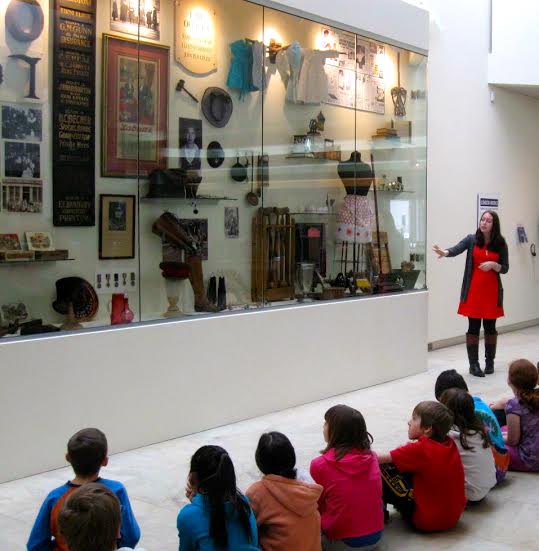Using Imagination to Activate History
25 November 2013 - 4:39pm
 The museum has always been a place that has activated my imagination. All I needed was a text panel to provide context and I would be transported to another era. It did not matter if the object was a Victorian dining set or a piece of a fallen meteorite – I was entranced. I still believe that the museum is an exciting place to activate the imagination for experiential learning, but a large piece of this activation depends on participatory practices. As a public historian, I am a strong advocate that the more engaging an activity is, the more rewarding and memorable the experience will be for a child. This past year I was able to put this into action in the context of museum education at Museum London as part of my Public History Master’s program at Western University.
The museum has always been a place that has activated my imagination. All I needed was a text panel to provide context and I would be transported to another era. It did not matter if the object was a Victorian dining set or a piece of a fallen meteorite – I was entranced. I still believe that the museum is an exciting place to activate the imagination for experiential learning, but a large piece of this activation depends on participatory practices. As a public historian, I am a strong advocate that the more engaging an activity is, the more rewarding and memorable the experience will be for a child. This past year I was able to put this into action in the context of museum education at Museum London as part of my Public History Master’s program at Western University.
My class was given the exciting opportunity to curate an exhibition for the Museum based on labour in London over the past two hundred years. Some students may find professional, factory, and domestic work to be far removed from their daily lives. With this in mind, we sought to design complementary educational programming that could draw on relatable experiences in order to encourage imaginative play. It was our hope that combining historical accuracy with interactive features would allow students to use their personal perspectives to re-imagine history. Participatory play proved to be an excellent way to bring the inanimate objects behind glass to life, eliminating the distance between student and artifact.
Our first activity involved using a 3D printer to replicate a selection of the physical artifacts displayed in the exhibition. We made a number of reproductions that were small enough to fit in the palm of a child’s hand, re-creating objects such as a teacup and a gavel. Made out of biodegradable PLA plastic, the printed artifacts were very durable and able to withstand the handling of visiting school groups. The activity was a simple guessing game, which involved participating children closing their eyes and trying to guess what the object was by feeling its physical details. This process allowed for the educators to facilitate a discussion about the object and how it might have been used by a child of similar age during the historical period. The excitement (and slight competition) brought on by the activity allowed the students to critically engage with the object, inquire about its use and its invention. They were also awe-struck by the 3D printing technology.
The second activity built upon the focus on textiles throughout the exhibition case. The domestic section of the case included a patchwork quilt, an apron and a selection of baby clothes displayed on a drying rack. In order to bring the work behind these objects to life, we decided to design a dressing puzzle activity. Using historical clothing patterns, we fashioned male and female labour outfits into segments with Velcro sewn into the sides for easy attachment. The children performed this activity in groups, working together to assemble historically appropriate outfits for factory workers, domestic labourers and other workers. Museum educators were then able to use this as an opportunity to demonstrate what type of labour would have gone into making uniforms, as well as describe sewing duties within the home, and how this labour would have contributed to London’s economy.
The reception these activities received was positive, from both the Museum and its visiting school groups. The students enjoyed building on familiar experiences to learn something new. The familiarity of guessing and assembly games sparked students' imaginations and their direct engagement with the materials inspired feelings of empathy for their historical counterparts. The key to this understanding was building on relatable experience and facilitating critical discussion.
How do you "bring history to life" in your museum or classroom?
Photo: Author's photo.

